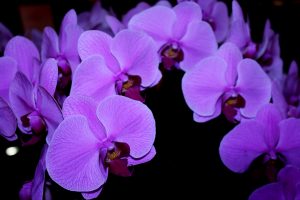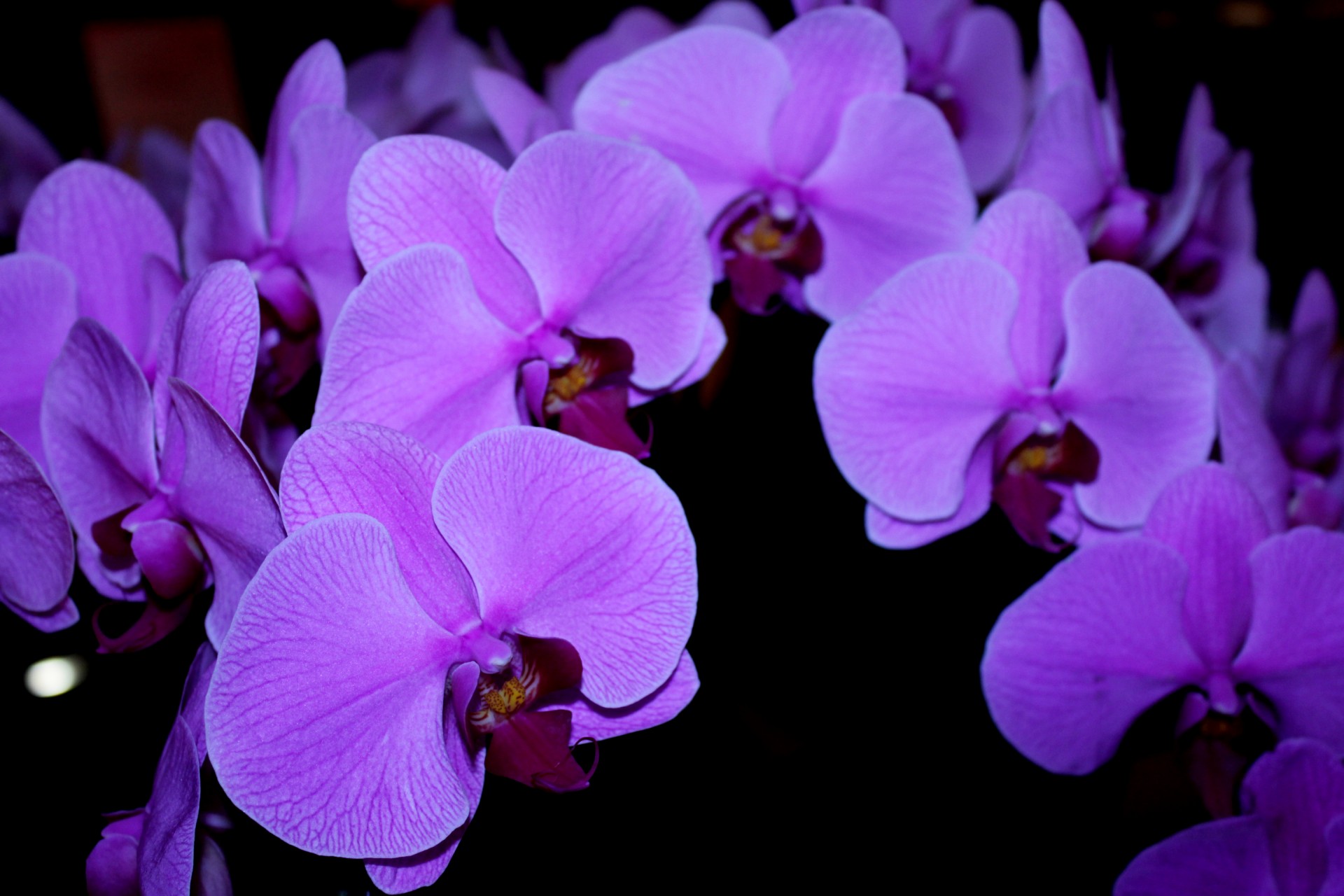
Dive into the world of growing orchids in hydroponics with our friendly guide. Discover tips and tricks for vibrant blooms in a soil-free environment.
Growing Orchids In Hydroponics Key Takeaways:
- Growing orchids in hydroponics involves using a soilless system to provide plants with nutrients and water.
- This method allows for precise control over the growing environment, leading to healthier plants and vibrant blooms.
- Suitable for both terrestrial and some epiphytic orchids, hydroponics can be an efficient and rewarding way to cultivate these beautiful flowers.
Are you curious about growing orchids in hydroponics? This innovative method lets you cultivate stunning orchids without soil, providing precise nutrient control and potentially healthier plants.
Whether you’re a seasoned grower or new to the orchid world, hydroponics can open up exciting possibilities for your indoor garden.
Growing Orchids In Hydroponics
Are you interested in growing orchids in hydroponics? I am a hydro grower who wants to give this a try.
I am not talking about semi-hydroponic or water culture in a jar or vase but a true recirculating hydro system.
I admit I am not an expert on orchids. But I do have a lot of experience growing vegetables and other plants with hydroponics.
But lately, I have been doing a lot of research on ways to grow orchids.
From what I can tell orchids fall into 2 basic categories. There are terrestrial orchids that grow in soil.
The other category is epiphytes which grow on tree bark and get oxygen and moisture from the air.
I think I will have much better luck growing terrestrial orchids with a recirculating hydroponic system.
Growing Orchids In Hydroponics
I will be looking at growing them in a top feed drip system, DFT system (deep flow technique), or DWC (deep water culture).
I am not sure yet what system I will use and might try all of them.
Coco Coir For Orchids?
I found in India orchids are grown in coco. While some people might consider coco as similar to soil it is actually a hydroponic medium.
Coco coir is slow to break down and can last for years. It is lightweight and has good wicking capacity.
At the same time that it holds moisture very well it still allows for good air circulation.
Here is an overview of some research I did on epiphytic and terrestrial orchids.
Terrestrial Orchids
Terrestrial orchids are some of the most popular and well-known types of Orchids.
Terrestrial orchids make up about 200 of all known orchid species, with over 28,000 species in total.
Terrestrial orchids can be found on every continent except for Antarctica.
Some of the most popular terrestrial orchid species include Bletilla, Cypripedium, and Orchis.
Terrestrial orchids typically grow in humid environments, such as rainforests, and often have large and showy flowers.
Some grow upright and some are crawling vines.
They are woodland plants and are sometimes called hardy orchids. Some are quite cold tolerant and some even need to freeze before they flower again.
Terrestrial orchids are often used in horticulture, and many hybrids have been created.
Cymbidiums A Semi-Terrestrial Orchid
Cymbidiums make dense clusters of long-lasting flowers. They are popular as cut flowers because they can make large showy flowers that are long-lasting.
Cymbidiums are semi-terrestrial orchids from tropical and subtropical Asia and parts of Australia. These orchids come in two types: miniature and standard. A standard Cymbidium can have flowers up to 5” wide, but needs cooler temperatures to flower. A miniature Cymbidium has flowers half this size, but still just as beautiful, and can flower at slightly warmer temperatures. https://gardens.si.edu/collections/plants/orchids/orchid-care-sheets/cymbidium/
Can They Be Grown Hydroponically?
It is hard to find information on growing orchids hydroponically. That does not mean it isn’t being done though.
Many commercial growers are quite secretive about their growing methods.
They may talk among themselves but seldom share their knowledge elsewhere.
Yes, terrestrial orchids can be grown hydroponically.
Hydroponic systems provide terrestrial orchids with the water and nutrients they need to thrive.
This allows growers to control the environment in which the plants grow.
This type of growing system can be beneficial for terrestrial orchids, as it can help to prevent diseases and pests.
Hydroponic systems can also help to increase the growth rate of terrestrial orchids.
What Hydroponic Methods Are Used To Grow Terrestrial Orchids?
There are a few different hydroponic methods that can be used to grow terrestrial orchids.
One popular method is called the nutrient film technique (NFT).
This method involves using channels in which a thin film of nutrient-rich water flows.
The terrestrial orchids are placed in these channels, and their roots come into contact with the water.
Another popular method is called deep flow technique (DFT). This method although somewhat similar to NFT involves running a higher water level and the addition of aeration. So this would be done in channels or a modified flood tray.
What Is The Best Soil For Terrestrial Orchids?
There is no one “best” soil for terrestrial orchids, as they can grow in a variety of soil types.
However, terrestrial orchids typically prefer loose, well-draining soils.
This type of soil allows the roots of the terrestrial orchids to breathe and prevents them from becoming waterlogged.
Terrestrial orchids also typically prefer soils that are high in organic matter. This type of soil helps to retain moisture and provides terrestrial orchids with the nutrients they need to thrive.
So the best soil for terrestrial orchids is a light, well-draining mix that should be able to hold moisture but still drain well. Sounds like coco coir could be the ideal growing medium.
What Is The Best Way To Propagate Terrestrial orchids?
There are a few different ways that terrestrial orchids can be propagated.
One popular method is division. This involves dividing the terrestrial orchid into two or more parts and then replanting each part in its own pot.
How Often Should I Water My Terrestrial Orchid?
Terrestrial orchids should generally be watered about once a week. The potting mix should be allowed to dry out between waterings.
Terrestrial orchids are native to humid environments, but they do not like to be kept too wet. Over-watering can lead to root rot and other problems.
What Is The Best Way To Fertilize My Terrestrial Orchid?
The best way to fertilize a terrestrial orchid is with a weak solution of fertilizer about once a month.
Terrestrial orchids do not require a lot of nutrients, so it is important not to over-fertilize.
Some orchid growers like to use a weak CalMag solution to feed their plants. This provides some nitrogen and calcium and magnesium and some CalMag mixes also have a bit of iron in them.
What Are The Ideal Growing Conditions For Terrestrial Orchids?
Terrestrial orchids prefer warm, humid conditions. They should be grown in an area that receives indirect sunlight.
These plants normally grow in wooded areas so they should not have too much bright sun. Purpling leaves is a sign of too much light.
Terrestrial orchids also require good ventilation. The potting mix should be kept moist but not wet. Over-watering can lead to root rot and other problems.
How Do I Know If My Terrestrial Orchid Is Healthy?
A healthy terrestrial orchid should have green, glossy leaves. The flowers should be vibrant and colorful.
The roots should be white and fleshy. If the leaves of the plant are yellow or brown, this is an indication that the plant is not healthy.
What Are Some Common Problems With Terrestrial Orchids?
One common problem with terrestrial orchids is root rot. This can be caused by over-watering or poor drainage.
Another common problem is insufficient humidity. This can cause the leaves of the plant to turn brown and dry out.
If the potting mix is too dry, this can also cause problems.
Epiphytic Orchids
Epiphytic orchids are a type of orchid that grows on other plants or objects. They are typically found in humid environments, such as rainforests.
Epiphytic orchids usually have aerial roots that absorb moisture and nutrients from the air.
Some popular species of epiphytic orchids include the Phalaenopsis, Cattleya, and Vanda.
Epiphytic orchids typically have colorful flowers that make them popular among gardeners and growers.
Can Epiphytic Orchids Be Grown Hydroponically?
Yes, epiphytic orchids can be grown hydroponically. In fact, many growers prefer to grow epiphytic orchids hydroponically because they do not require a lot of soil.
Epiphyic orchids are often grown in glass vases with a system called water culture. This is not to be confused with deep water culture.
The term water culture is a bit misleading because orchids are not constantly in water.
Roots spend several days partly submerged and several days drying out. The vase or jar helps to maintain humidity around the roots.
Epiphytic orchids can also be grown in a variety of media, such as bark chips, sphagnum moss, and perlite. They also require high humidity and good ventilation.
What Is The Best Soil For Epiphytic Orchids?
Some epiphytes are grown in water with no soil at all.
The best soil for epiphytic orchids is a light, well-draining mix. Epiphytic orchids do not require a lot of nutrients, so are often grown in sphagnum moss mixes.
The potting mix should be able to hold moisture but still drain well. A good mix for epiphytic orchids includes sphagnum moss, perlite, and bark chips.
How Often Should I Water My Epiphytic Orchid?
Epiphytic orchids should be watered about once a week. The potting mix should be allowed to dry out between watering.
What Is The Best Way To Fertilize My Epiphytic Orchid?
The best way to fertilize an epiphytic orchid is with a weak solution of fertilizer about once a month.
Epiphytic orchids do not require a lot of nutrients, so it is important not to over-fertilize.
A good fertilizer for epiphytic orchids is one that is low in nitrogen. Too much nitrogen can lead to leaf burn.
What Are The Ideal Growing Conditions For Epiphytic Orchids?
Epiphytic orchids prefer warm, humid conditions. They should be grown in an area that receives indirect sunlight.
Epiphytic orchids also require good ventilation.
How Do I Know If My Epiphytic Orchid Is Healthy?
A healthy epiphytic orchid should have green, glossy leaves. The flowers should be vibrant and colorful. The roots should be white and fleshy. If the leaves of the plant are yellow or brown, this is an indication that the plant is not healthy.
What are some common problems with epiphytic orchids?
One common problem with epiphytic orchids is root rot. This can be caused by over-watering or poor drainage.
Another common problem is insufficient humidity. This can cause the leaves of the plant to turn brown and dry out.
If the potting mix is too dry, this can also cause problems.
Finally, epiphytic orchids can be susceptible to pests, such as mealybugs and aphids.
Semi Hydroponic Or Water Culture For Orchids
Semi-hydroponic or water culture is a method of growing orchids in which the roots are exposed to a moist environment but not submerged in water.
This method is often used for orchids that are difficult to grow in traditional potting mixes.
Semi-hydroponic culture can be achieved by using an open container filled with moist Sphagnum moss, perlite, or bark chips.
The container should be placed in an area that receives indirect sunlight and has good ventilation. The roots of the plant will need to be misted regularly to keep them moist.
Fertilizing semi-hydroponically grown terrestrial orchids is the same as fertilizer terrestrial orchids that are grown in potting mix; a weak solution of fertilizer should be applied about once a month.
What Is The Best Way To Repot a Terrestrial Orchid?
The best way to repot a terrestrial orchid is to choose a pot that is only slightly larger than the current pot.
The new pot should have drainage holes in the bottom. The terrestrial orchid should be removed from the current pot and the roots gently rinsed with water.
This is also a good time to divide the plant if it has grown too large.
Any dead or damaged roots should be trimmed away. The terrestrial orchid should then be placed in the new pot with fresh potting mix.
Water well and place in an area that receives indirect sunlight.
FAQs on Growing Orchids in Hydroponics
Q: Which orchids grow well hydroponically?
A: Terrestrial orchids are best suited for hydroponic growth as they naturally grow in loose, moist soil and require a steady supply of moisture and nutrients.
Q: Can epiphytic orchids be grown hydroponically?
A: While epiphytic orchids are not ideal for hydroponic gardens due to their natural growth on tree branches and nutrient absorption from rainwater and decaying plant matter, some growers have successfully adapted them to water culture systems.
Q: What are the benefits of growing orchids hydroponically?
A: Hydroponic systems provide a controlled environment for orchids, reducing or eliminating threats like bacteria, fungi, and pests.
They also allow for precise monitoring and adjustment of nutrients and water.
Q: What is the best growing medium for hydroponic orchids?
A: Inert materials like clay pebbles, gravel, perlite, charcoal, or rockwool are commonly used as growing mediums for hydroponic orchids.
Q: How much light do hydroponic orchids need?
A: Hydroponic orchids require plenty of sunlight, more than many typical houseplants. A windowsill that receives a lot of sun is an ideal location.
Q: What temperature is best for hydroponic orchids?
A: Room temperatures found in most homes are suitable for hydroponic orchids, with a variance of up to 30 degrees near a window to mimic their natural environment.
Growing Orchids In Hydroponics Conclusion:
Hydroponic cultivation offers a fascinating way to grow orchids, providing an environment where you can precisely control the factors affecting their growth. This method can lead to healthier plants and more vibrant blooms.
Hydroponic Systems for Orchids:
Explore the various hydroponic systems suitable for orchids, such as deep water culture (DWC), nutrient film technique (NFT), deep flow technique (DFT), and drip systems, each offering unique benefits for different types of orchids.
Nutrient Management:
Learn about the importance of providing the right balance of nutrients in the water solution to ensure optimal orchid growth and flowering.
Light and Temperature:
Understand the crucial role of light and temperature in orchid development, and how to maintain the ideal conditions in a hydroponic setup.
Humidity and Air Circulation:
Discover how to maintain appropriate humidity levels and ensure good air circulation around your hydroponic orchids to mimic their natural environment and prevent diseases.
Curious?
Some more info on orchids https://en.wikipedia.org/wiki/Orchidaceae
Some info about me:
About Growing Hydroponic Orchids – Hydroponic Orchids
This post contains affiliate links.


